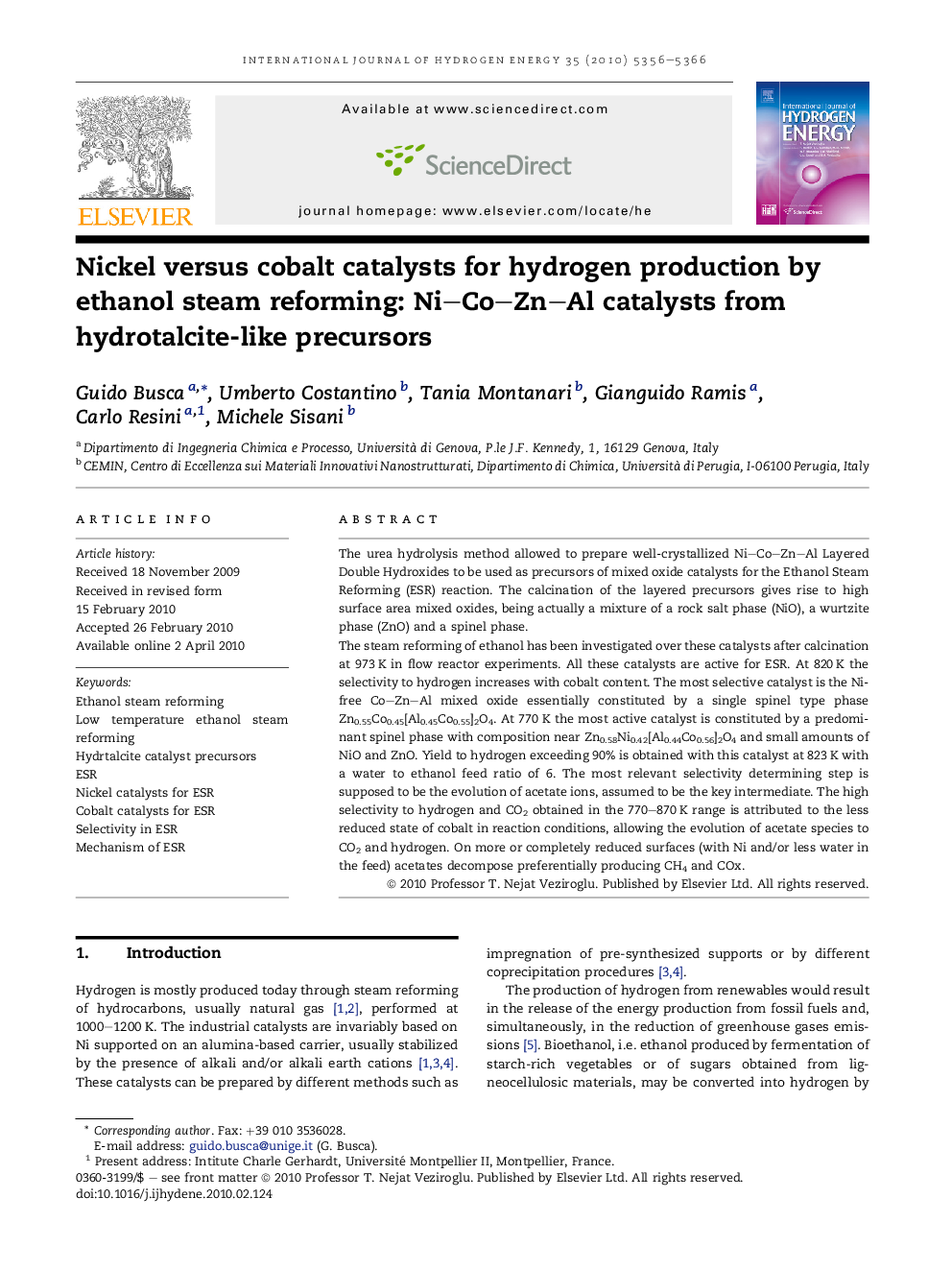| Article ID | Journal | Published Year | Pages | File Type |
|---|---|---|---|---|
| 1280556 | International Journal of Hydrogen Energy | 2010 | 11 Pages |
The urea hydrolysis method allowed to prepare well-crystallized Ni–Co–Zn–Al Layered Double Hydroxides to be used as precursors of mixed oxide catalysts for the Ethanol Steam Reforming (ESR) reaction. The calcination of the layered precursors gives rise to high surface area mixed oxides, being actually a mixture of a rock salt phase (NiO), a wurtzite phase (ZnO) and a spinel phase.The steam reforming of ethanol has been investigated over these catalysts after calcination at 973 K in flow reactor experiments. All these catalysts are active for ESR. At 820 K the selectivity to hydrogen increases with cobalt content. The most selective catalyst is the Ni-free Co–Zn–Al mixed oxide essentially constituted by a single spinel type phase Zn0.55Co0.45[Al0.45Co0.55]2O4. At 770 K the most active catalyst is constituted by a predominant spinel phase with composition near Zn0.58Ni0.42[Al0.44Co0.56]2O4 and small amounts of NiO and ZnO. Yield to hydrogen exceeding 90% is obtained with this catalyst at 823 K with a water to ethanol feed ratio of 6. The most relevant selectivity determining step is supposed to be the evolution of acetate ions, assumed to be the key intermediate. The high selectivity to hydrogen and CO2 obtained in the 770–870 K range is attributed to the less reduced state of cobalt in reaction conditions, allowing the evolution of acetate species to CO2 and hydrogen. On more or completely reduced surfaces (with Ni and/or less water in the feed) acetates decompose preferentially producing CH4 and COx.
